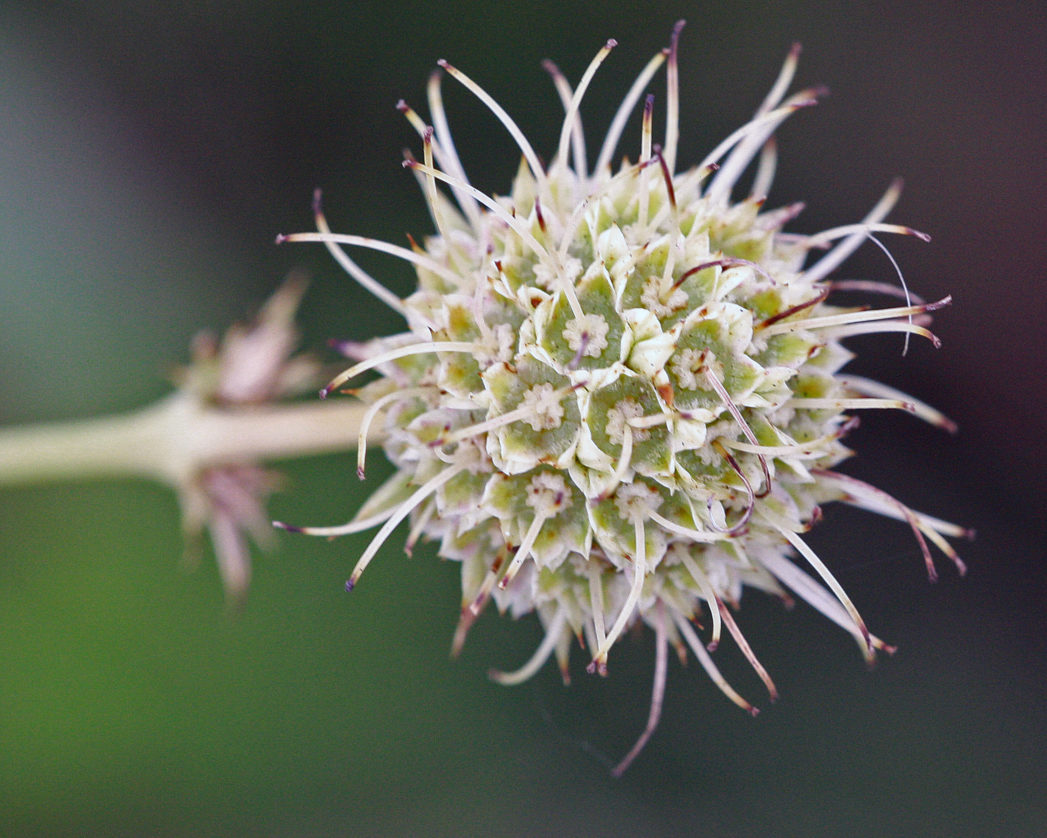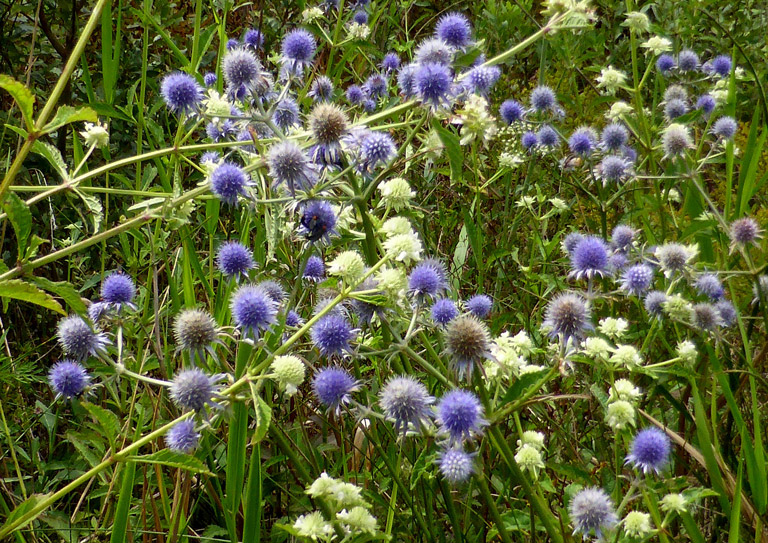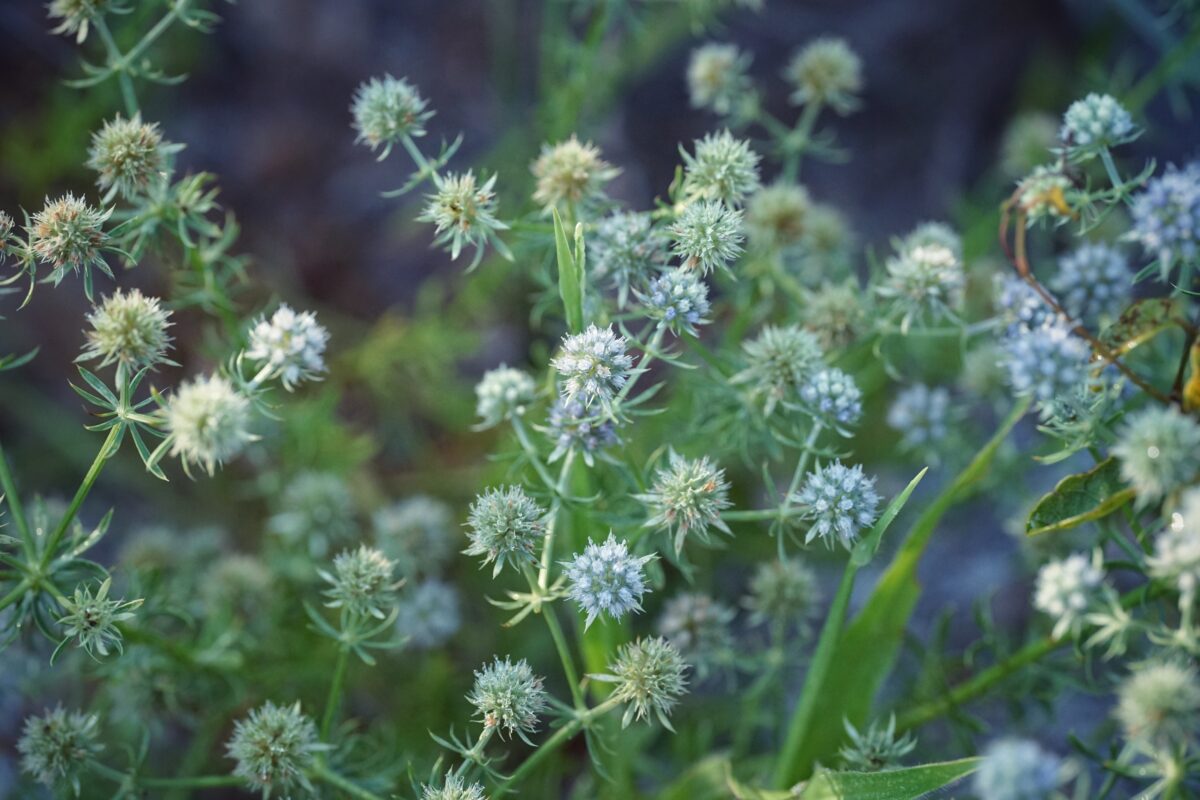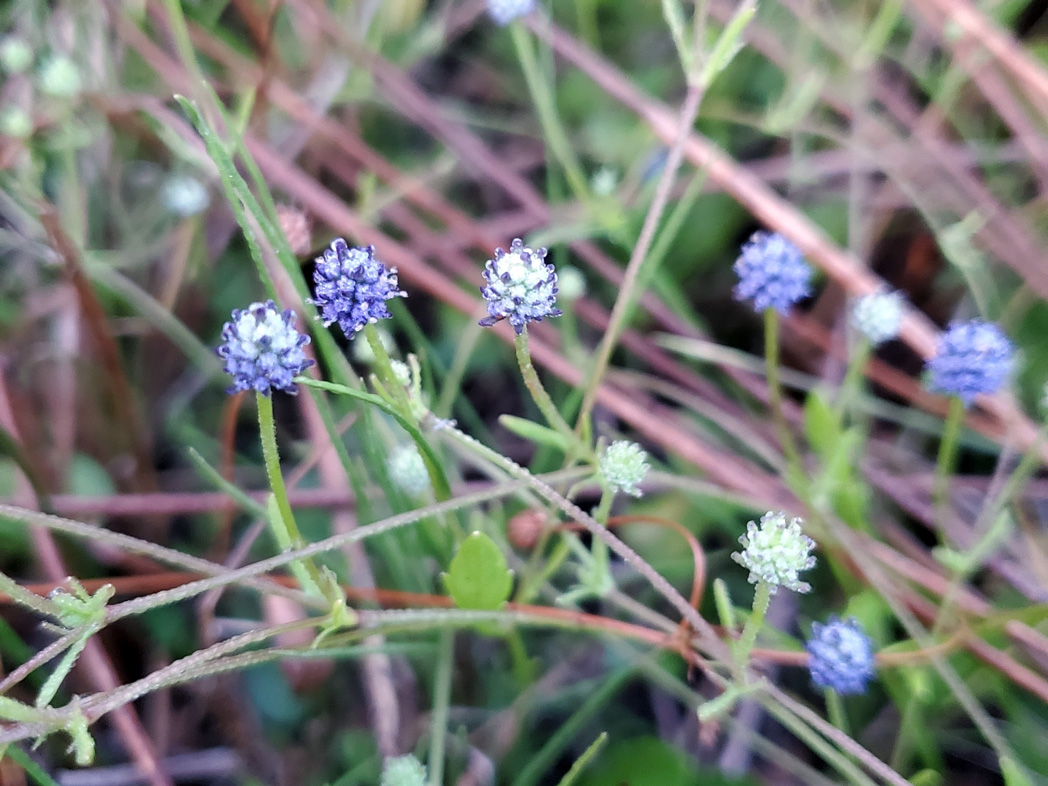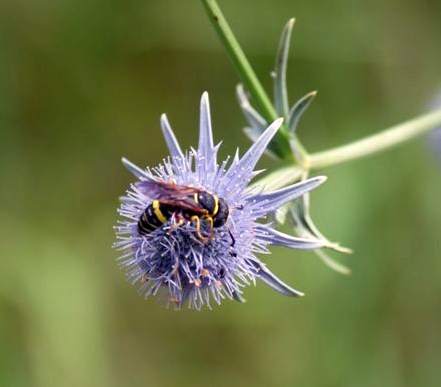Button rattlesnakemaster
Pictured above: Button rattlesnakemaster (Eryngium yuccifolium) by Mary Keim. Click on terms for botanical definitions. View post as a PDF.
Button rattlesnakemaster (Eryngium yuccifolium) is a peculiar perennial wildflower that occurs in flatwoods, sandhills, savannas and marshes throughout Florida. Its flowers bloom in late spring through fall. They are frequented by a variety of pollinators, but are of special value to native bees. The plant is a larval host for the Black swallowtail butterfly and attracts many predatory and parasitoid insects that prey on garden pests.
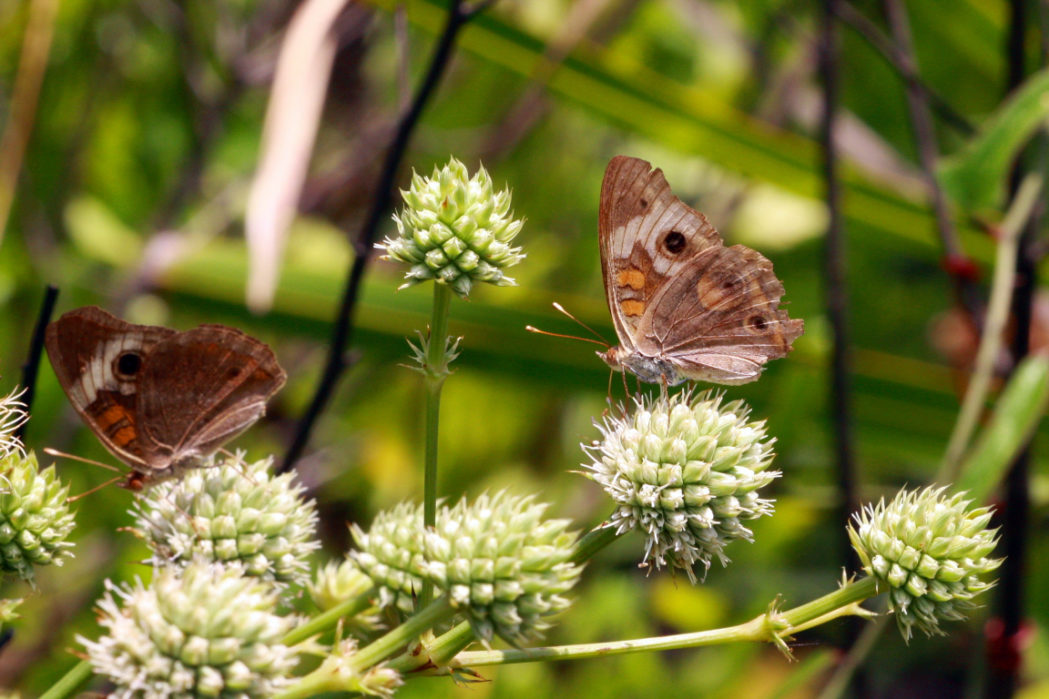
Eryngium species lack the characteristic umbellate flower form of their Apiaceae family cousins. Rather, the umbel is compacted into a tight, prominently globose flowerhead, reminiscent of an aster. In Button rattlesnakemaster, the flowerhead may be up to 1 inch in diameter and is comprised of many tiny whitish-green flowers. It is subtended by silvery bracts and borne on erect, multi-branched stems. Leaves are long (2–3 feet), linear or grasslike and taper to a point. They have a succulent appearance and grow in stemless rosettes. Stem leaves are smaller, stiff and alternately arranged. Leaf veination is parallel. Leaf margins are armed with evenly spaced spines. The fruit is a schizocarp that splits into a pair of inconspicuous carpels at maturity.
The species epithet yuccifolium references the leaves (Latin: folium) that resemble those of Yucca species. The common name rattlesnakemaster (also known as snakeroot, both of which are used to describe the Eryngium genus) may have come from its use by Native Americans as an antidote for rattlesnake venom. Timicuan and Creek Indians also used the roots to treat neuralgia and the leaves for dysentery.
Family: Apiaceae (Umbelliferae) (Carrot, celery or parsley family)
Native range: Nearly throughout
To see where natural populations of Button rattlesnakemaster have been vouchered, visit florida.plantatlas.usf.edu.
Lifespan: Perennial
Soil: Moderately dry to wet or inundated sandy, loamy or calcareous soils
Exposure: Full sun to partial shade
Growth habit: 3–5’ tall, 1–3’ wide
Propagation: Seed, cuttings
Florida regions of landscape suitability: North, Central, South
Garden tips: Button rattlesnakemaster is a good choice for difficult areas because it is adaptable to a variety of soil and moisture conditions. It does well in low-nutrient or fertile soils, but is not salt tolerant. Its unique growth habit, interesting flower form and attractive foliage make it a nice addition to wildflower gardens and naturalistic landscapes.
Button rattlesnakemaster seeds may be purchased from the Florida Wildflower Growers Cooperative. Plants are often available from nurseries that specialize in Florida native plants. Visit www.PlantRealFlorida.org to find a nursery in your area.
Learn more about Button rattlesnakemaster from the Florida Native Plant Society and the Institute for Regional Conservation.
For information on other Eryngium species, see these resources:

